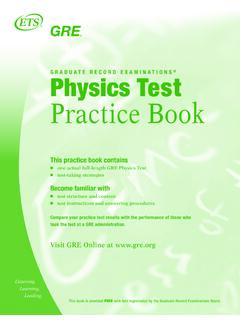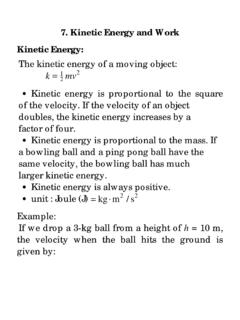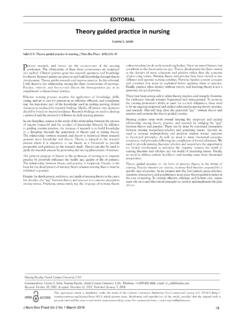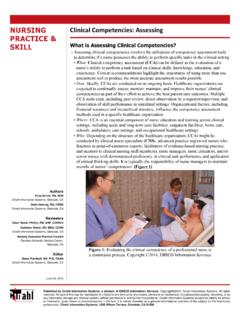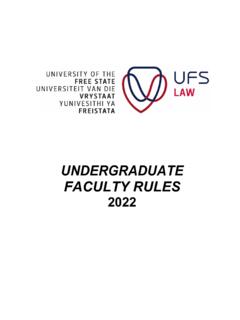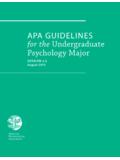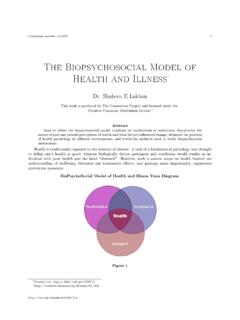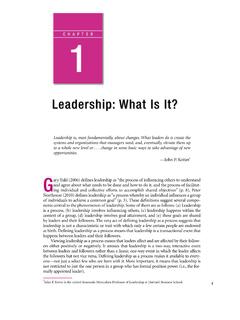Transcription of This practice book contains PHYSICS TEST
1 Graduate Record Examinations This book is provided FREE withtest registration by theGraduate Record Examinations practice bookcontains one actual full-lengthGRE PHYSICS Test test-taking strategiesBecome familiar with test structure and content test instructions andanswering proceduresCompare your practicetest results with theperformance of thosewho took the test at aGRE GRE Online at to Test Takers: Keep this practice book until you receive your score book contains important information about content specifications and 2001 by Educational Testing Service. All rights TESTING SERVICE, ETS, the ETS logos, GRADUATE RECORD EXAMINATIONS,and GRE are registered trademarks of Educational Testing TESTPRACTICE BOOKP urpose of the GRES ubject TestsThe GRE Subject Tests are designed to help graduateschool admission committees and fellowship sponsorsassess the qualifications of applicants in specific fieldsof study.
2 The tests also provide you with an assessmentof your own on the tests are intended to indicate knowl-edge of the subject matter emphasized in many under-graduate programs as preparation for graduate past achievement is usually a good indicator offuture performance, the scores are helpful in predictingsuccess in graduate study. Because the tests are stan-dardized, the test scores permit comparison of studentsfrom different institutions with different undergraduateprograms. For some Subject Tests, subscores are pro-vided in addition to the total score; these subscoresindicate the strengths and weaknesses of your prepara-tion, and they may help you plan future GRE Board recommends that scores on theSubject Tests be considered in conjunction with otherrelevant information about applicants.
3 Because numer-ous factors influence success in graduate school,reliance on a single measure to predict success is notadvisable. Other indicators of competence typicallyinclude undergraduate transcripts showing coursestaken and grades earned, letters of recommendation,the GRE Writing Assessment score, and GRE GeneralTest scores. For information about the appropriate useof GRE scores, write to GRE Program, EducationalTesting Service, Mail Stop 57-L, Princeton, NJ 08541,or visit our Web site at of theSubject TestsEach new edition of a Subject Test is developed by acommittee of examiners composed of professors in thesubject who are on undergraduate and graduate facul-ties in different types of institutions and in differentregions of the United States and Canada.
4 In selectingmembers for each committee, the GRE Program seeksthe advice of the appropriate professional associationsin the content and scope of each test are specifiedand reviewed periodically by the committee of examin-ers. Test questions are written by the committee and byother faculty who are also subject-matter specialistsand by subject-matter specialists at ETS. All questionsproposed for the test are reviewed by the committeeand revised as necessary. The accepted questions areassembled into a test in accordance with the contentspecifications developed by the committee to ensureadequate coverage of the various aspects of the fieldand, at the same time, to prevent overemphasis on anysingle topic. The entire test is then reviewed andapproved by the and measurement specialists on theETS staff assist the committee, providing informationand advice about methods of test construction andhelping to prepare the questions and assemble the addition, each test question is reviewed to eliminatelanguage, symbols, or content considered potentiallyoffensive, inappropriate for major subgroups of the test-taking population, or likely to perpetuate any negativeattitude that may be conveyed to these subgroups.
5 Thetest as a whole is also reviewed to ensure that the testquestions, where applicable, include an appropriatebalance of people in different groups and different of the diversity of undergraduate curricula,it is not possible for a single test to cover all thematerial you may have studied. The examiners,Table of Contents Purpose of the GRE Subject Tests .. 3 Development of the Subject Tests .. 3 Content of the PHYSICS Test .. 4 Preparing for a Subject Test .. 5 Test-Taking Strategies .. 6 What Your Scores Mean .. 6 practice PHYSICS Test .. 9 Scoring Your Subject Test .. 73 Evaluating Your Performance .. 76 Answer Sheet .. 774 PHYSICS TESTPRACTICE BOOK therefore, select questions that test the basic knowl-edge and skills most important for successful graduatestudy in the particular field.
6 The committee keeps thetest up-to-date by regularly developing new editionsand revising existing editions. In this way, the testcontent changes steadily but gradually, much like mostcurricula. In addition, curriculum surveys are con-ducted periodically to ensure that the content of a testreflects what is currently being taught in the under-graduate a new edition of a Subject Test is first admin-istered, examinees responses to each test question areanalyzed in a variety of ways to determine whethereach question functioned as expected. These analysesmay reveal that a question is ambiguous, requiresknowledge beyond the scope of the test, or is inappro-priate for the total group or a particular subgroup ofexaminees taking the test.
7 Answers to such questionsare not used in computing this analysis, the new test edition isequated to an existing test edition. In the equatingprocess, statistical methods are used to assess thedifficulty of the new test. Then scores are adjusted sothat examinees who took a difficult edition of the testare not penalized, and examinees who took an easieredition of the test do not have an advantage. Varia-tions in the number of questions in the differenteditions of the test are also taken into account inthis on the Subject Tests are reported as three-digit scaled scores with the third digit always maximum possible range for all Subject Test totalscores is from 200 to 990. The actual range of scores fora particular Subject Test, however, may be smaller.
8 Themaximum possible range of Subject Test subscores is20 to 99; however, the actual range of subscores for anytest or test edition may be smaller. Subject Test scoreinterpretive information is provided in Interpreting YourGRE Scores, which you will receive with your GREscore report, and on the GRE Web site at of the PHYSICS TestThe test consists of about 100 five-choice questions,some of which are grouped in sets and based on suchmaterials as diagrams, graphs, experimental data, anddescriptions of physical aim of the test is to determine the extent ofthe examinees grasp of fundamental principles andtheir ability to apply these principles in the solutionof problems. Most test questions can be answered onthe basis of a mastery of the first three years of under-graduate International System (SI) of units is usedpredominantly in the test.
9 A table of information (seepage 10) representing various physical constants and afew conversion factors among SI units is presented inthe test approximate percentages of the test on themajor content topics have been set by the committeeof examiners, with input from a nationwide survey ofundergraduate PHYSICS curricula. The percentagesreflect the committee s determination of the relativeemphasis placed on each topic in a typical undergradu-ate program. These percentages are given below alongwith the major subtopics included in each contentcategory. In each category, the subtopics are listedroughly in order of decreasing importance for inclusionin the test. Nearly all the questions in the test willrelate to material in this listing; however, there may beoccasional questions on other topics not explicitlylisted CLASSICAL MECHANICS (such askinematics, Newton s laws, work andenergy, oscillatory motion, rotationalmotion about a fixed axis, dynamics ofsystems of particles, central forces andcelestial mechanics, three-dimensionalparticle dynamics, Lagrangian andHamiltonian formalism, noninertialreference frames, elementary topics influid dynamics)2.
10 ELECTROMAGNETISM (such aselectrostatics, currents and DCcircuits, magnetic fields in free space,Lorentz force, induction, Maxwell sequations and their applications,electromagnetic waves, AC circuits,magnetic and electric fields in matter)3. OPTICS AND WAVE PHENOM-ENA (such as wave properties, super-position, interference, diffraction,geometrical optics, polarization,Doppler effect)20%18%9%5 PHYSICS TESTPRACTICE BOOK4. THERMODYNAMICS AND STA-TISTICAL MECHANICS (such asthe laws of thermodynamics, thermo-dynamic processes, equations of state,ideal gases, kinetic theory, ensembles,statistical concepts and calculation ofthermodynamic quantities, thermalexpansion and heat transfer)5. QUANTUM MECHANICS (such asfundamental concepts, solutions ofthe Schr dinger equation (includingsquare wells, harmonic oscillators,and hydrogenic atoms), spin, angularmomentum, wave function symmetry,elementary perturbation theory)6.
